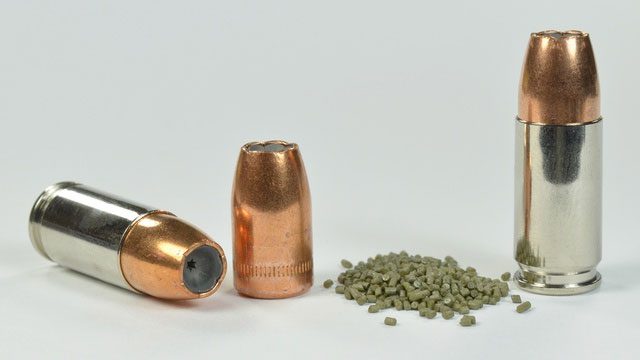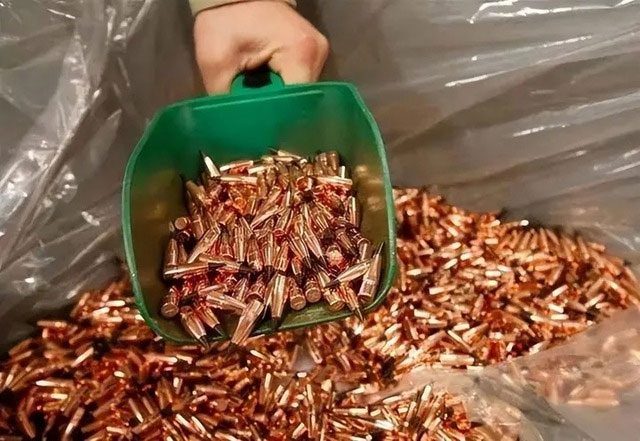Since ancient times, ammunition manufacturing has been a focal point of military technology as it directly relates to the outcomes of warfare. Compared to traditional steel ammunition, why are more countries opting to use copper ammunition? The answer may lie beyond your imagination.
Copper is Denser and Has Better Armor-Piercing Capability
The choice of copper ammunition offers certain advantages in specific situations. As an important metallic material, copper possesses several exceptional properties that make it an ideal armor-piercing material.
Copper is significantly denser than many other metals, which means that bullets made from copper have a higher mass. The mass of a bullet is crucial for its penetration capability and energy transfer. This gives copper ammunition a clear advantage in armor-piercing ability, allowing them to penetrate opponents’ protective gear more effectively and cause greater damage.

Due to the higher mass of copper bullets, they retain kinetic energy better and produce a greater impact force upon hitting a target. (Image: ZME).
Copper is a very malleable and ductile metal, which enhances the resistance of copper bullets to deformation and shattering. When striking a target at high speeds, the bullet experiences immense impact forces and pressures. This characteristic allows copper bullets to maintain better stability after hitting a target, increasing their penetration and effectiveness.
Copper also has good corrosion resistance and can be recycled effectively. During prolonged storage, some bullets may come into contact with moisture or other corrosive substances, negatively affecting their quality. However, copper’s excellent corrosion resistance enables it to withstand these adverse factors effectively. Additionally, copper is a recyclable material, helping to protect the environment and improve resource utilization.

The malleability and ductility of copper improve its resistance to deformation and breakage, while its electrical and thermal conductivity allows for better energy release and impact creation. Copper ammunition is more expensive to produce, flies at relatively slower speeds, and can encounter issues in special circumstances. The choice of copper ammunition must be comprehensively considered based on specific combat conditions and needs. (Image: Zhihu).
Copper ammunition also comes with certain limitations. Copper ammunition is more expensive to produce than other materials, making their use uneconomical in some cases. The higher density of copper bullets results in relatively slower flight speeds, which may reduce accuracy and range. In certain extreme environments, such as harsh temperature and humidity conditions, copper bullets may encounter issues such as freezing and corrosion.
Copper Has Better Thermal Conductivity and Can Cool Down Faster
Thermal conductivity is one of the important properties of materials, determining the material’s ability to transfer heat. When using firearms, especially in cases of continuous firing and high-frequency shooting, the gun barrel may be affected by high temperatures, impacting accuracy and durability during firing. Copper, as an excellent thermal conductor, has become a reason why some other countries choose to produce copper ammunition.

Copper ammunition also has excellent friction control capabilities.
Compared to other common ammunition materials such as lead and steel, copper has superior thermal conductivity. This advantage allows copper bullets to conduct heat from the gun barrel more quickly, thereby reducing the temperature of the barrel. This is particularly important for organizations that require frequent gun use, such as special forces, police, and military units.
Copper ammunition also produces less waste during use compared to lead bullets. Due to lead’s potential to accumulate in the environment and harm ecosystems and human health, some countries have begun to ban or restrict the use of lead ammunition to reduce environmental pollution. Copper ammunition has become an ideal alternative due to its environmentally friendly properties.

To reduce barrel temperature and ensure the durability and accuracy of firearms, some other countries have chosen copper ammunition. Copper has excellent thermal conductivity and mechanical durability, allowing copper bullets to conduct heat faster and reduce barrel temperature. The use of copper material also meets environmental protection requirements. Therefore, copper ammunition has great potential for widespread application in the field of modern firearms. (Image: Zhihu).
Copper ammunition also has excellent friction control capabilities. Compared to lead and traditional steel bullets, the contact area between copper bullets and the barrel is smaller, meaning less friction during firing, thus reducing wear and corrosion of the barrel. This advantage significantly extends the lifespan of firearms, which is crucial for military applications and saves considerable maintenance and replacement costs.

Copper ammunition produces less waste and pollution during use than lead. Lead is harmful, and large-scale use of lead ammunition can severely pollute the surrounding environment. As an environmentally friendly material, using copper will not significantly impact the environment. This is one of the reasons why more and more countries are choosing copper ammunition. (Image: Zhihu).
The choice of copper ammunition as the primary military projectile is driven by several considerations. Copper ammunition has low friction properties and high velocity, not only extending the lifespan of firearms but also providing greater firepower support and longer shooting range. Additionally, the environmental protection characteristics of copper ammunition align with the modern military’s development trends.
It is believed that in the future, an increasing number of countries will choose copper ammunition to further enhance their military combat capabilities and their sense of responsibility in environmental protection.


















































